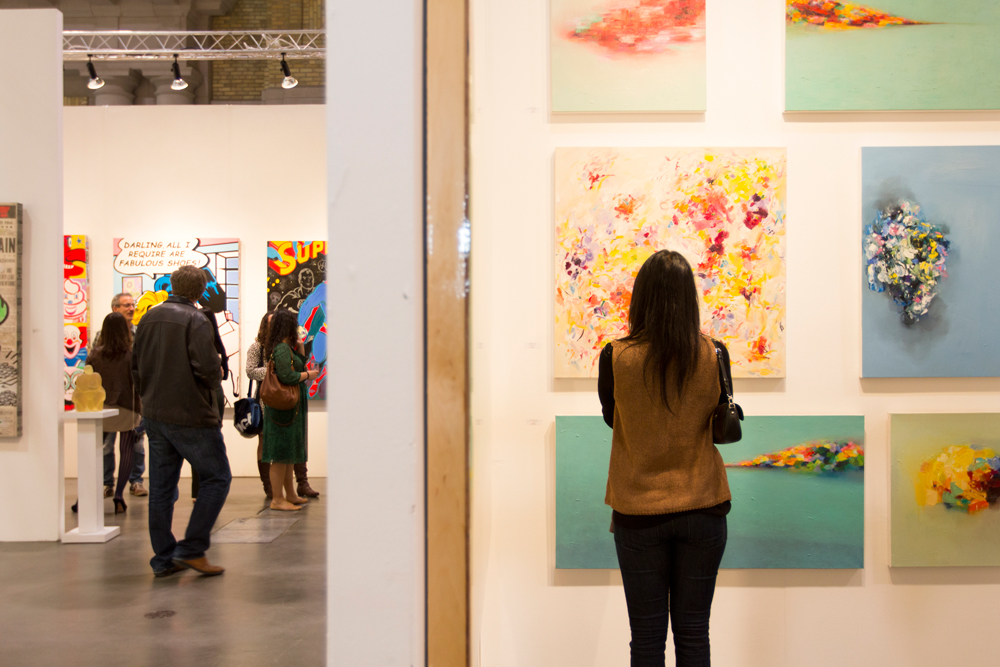Will Ramsay knows art fairs. Though he has played an integral role in developing Pulse New York and Miami Beach, Art Basel Hong Kong and India Art Fair, Ramsay’s best-known project is the Affordable Art Fair, a series of fairs formulated to attract first-time buyers making relatively modest purchases. The model has its detractors, but, with 14 iterations spread across four continents, it has found success. Yet the art-fair market itself is an increasingly competitive field; smaller fairs are abundant, while larger fairs are becoming more spectacularizing and curator-driven. Even the most established fairs face an uncertain future.
Caoimhe Morgan-Feir spoke with Ramsay ahead of the opening of the second edition of Love Art, the Affordable Art Fair’s Toronto equivalent, about claims that “the heyday of art fairs seems to be over,” the proliferation of niche fairs and measuring success within a continually shifting landscape.
Caoimhe Morgan-Feir: In 2014, art-market analysts Skate released their annual art-fairs report, and noted a significant decline in the general attendance of art fairs. What did you make of this?
Will Ramsay: That’s the first time I’ve heard that, and I’m surprised to hear it. There’s no evidence at any of my fairs that attendance is on the decline. I’ve never heard that.
CMF: But we do see a proliferation of art fairs, and niche art fairs (smaller, heavily curated or thematic) in particular. Even within Canada, we now have Art Toronto, Art Vancouver, Feature Art Fair, Papier, Love Art, the Artist Project and more. What do you think of this tendency?
WR: When I started 16 years ago there weren’t many fairs around the world. So yes, there has been a proliferation. As with any growth in any industry, there are going to be some businesses that work and some that don’t. I think that most of them get found out pretty quickly: most of them either fail before their first edition because they can’t get enough traction with exhibitors, or they fail after the first edition because they don’t get enough visitors, or didn’t sell enough art. Or, the third option is that the first edition works and you’re off and running.
CMF: You are involved with a wide range of fairs. How do you differentiate each of them and ensure their success, given that they all have different goals and are based in widely different markets?
WR: It’s not easy. I think as long as you have core values you are in good stead. We try to be highly efficient and we really care about the galleries that exhibit and the artists that they show. We want to democratize art, make it accessible and ensure visitors have a good time.
The markets, and tastes, are very different in different countries. One has got to be agile.
CMF: One of the talks this year at Love Art is on collecting art in the digital age: have you seen it affect collecting? Is there a future in online fairs and purchasing?
WR: I think that it has been very difficult. Artspace in the US has sold, Paddle8 seems to be growing revenues and doing quite well. Like any business area there are going to be some that work and some that don’t. The difficulty is that colours get distorted by a monitor, the image quality might not be that good, you can’t get a feeling of the texture of the painting, often the frame has been cut out, you can’t get a sense of scale. So there are some things that need to be seen in the flesh. Time will tell.
CMF: Have you seen non-digital changes in the collecting world since you started? You started the Affordable Art Fairs with the ethos of “democratizing the art world.” Have you seen effects of that?
WR: Definitely. I got a lot of resistance in the beginning. I showed one gallerist my business plan and he said, “Oh it’s never going to work, you have to create exclusivity.” And then a couple of years later he knocked at my door and asked for a stall at the Affordable Art Fair. People have come around to the idea that this level of the art market plays an important role.
CMF: What makes a good art fair? And with Love Art, in particular, what are the metrics you will be tracking this year to determine its success?
WR: It has got to be fun for the people walking in the door. We want the visitors to experience art—roughly half to two-thirds of our visitors already visit galleries and look at art. We’re not trying to patronize, but if people want to learn we offer that. We want to give people the confidence to feel that they can buy art.
We want people to have a good time, and make it as easy as possible to get over what is sometimes a considerable hurdle: the preconception that you have to know about art to buy it, and that you have to be a squillionaire to be able to affordable. It has worked in other places, it worked last year in Toronto and, hopefully, it will work this year as well.









